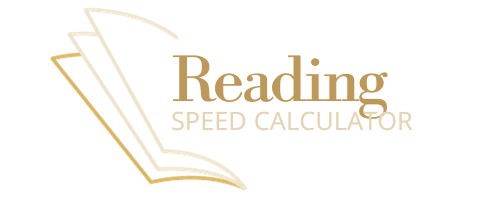What Is A Good Reading Speed – Finding The Ideal Pace
What Is A Good Reading Speed – Finding The Ideal Pace
What is a good reading speed? This question resonates with a range of individuals, from avid readers seeking to devour books more quickly, to students and professionals hoping to enhance their productivity through improved information processing. In our fast-paced digital world, where the skill of reading is paramount, finding the ideal pace is not just about speed – it’s about optimizing your comprehension and retention rate to match your reading goals.
Key Points:
- Good reading speed balances speed and comprehension
- Words per minute (WPM) measures reading speed
- Age and education impact reading speed
- Factors influencing reading speed include material complexity, purpose, motivation, and medium
- Speed reading can improve reading speed, but comprehension may vary
- Techniques and tools can help improve reading speed and comprehension
The balance between speed and understanding is delicate, yet achieving it can yield remarkable benefits in personal and professional development. With a plethora of methodologies claiming to boost reading performance, it’s essential to sift through the noise and understand the foundations that contribute to effective reading practices. Empirical studies in education and neuroscience have given us valuable insights into how we can sharpen our reading abilities.
This blog aims to navigate through these insights, offering practical advice, tips, and exercises based on empirical evidence and expert opinion to help you find your ideal reading speed. Whether you’re a student managing stacks of textbooks, a professional keeping up with industry reports, or someone who loves to unwind with a good book, understanding what is a good reading speed for you and how to enhance it could be a game-changer.
Defining Good Reading Speed
When it comes to defining good reading speed, there isn’t a one-size-fits-all answer. Good reading speed is subjective and varies widely depending on the individual’s goals, the material they are reading, and the context in which the reading takes place. Efficiency and comprehension are the cornerstones of a good reading speed, not merely the ability to skim through text at breakneck pace without grasping its meaning.
Understanding Words Per Minute (WPM)
Words per minute (WPM) is a standard metric for quantifying reading speed. It’s a simple yet effective gauge of how many words you can read in a minute, allowing you to assess and track your reading efficiency over time.
But here’s what many overlook: it’s not just about the numbers. A high WPM with poor comprehension is like a car with a powerful engine but no wheels – it won’t take you far in terms of true understanding. Therefore, when evaluating WPM, it’s imperative to consider comprehension rates as well.

Reading speed is important, but comprehension is equally crucial for true understanding and learning.
The Spectrum of Reading Speeds
The spectrum of reading speeds stretches from leisurely reading – where enjoyment is the main goal – to speed reading, a skill that enables individuals to absorb information rapidly while maintaining a reasonable level of comprehension.
It may be tempting to compare your reading speed to standardized benchmarks, but remember that speed is variable and influenced by many factors. Identifying where you fall on this spectrum can help set realistic expectations and guide your practice toward improving your reading pace.
The Impact of Age and Education on Reading Speed
Both age and education play pivotal roles in shaping an individual’s reading speed. Studies have shown how these factors contribute to a reader’s development, from cognitive abilities to familiarity with linguistic structures. Recognizing this impact is crucial in understanding and improving reading proficiency.
Average Reading Speed by Age
- Young Readers (ages 6-12): Studies have found that children in this age group are in the foundational phase, increasing their reading speed as they become more adept with language.
- Teenagers (ages 13-17): With improved cognitive skills and educational exposure, teenagers often see a significant uptick in their reading speeds, which is also when they can start benefiting from formal speed reading techniques.
- Adults (ages 18+): Adult reading speeds tend to plateau; however, this does not mean improvement is off the table. Adults have the cognitive maturity to employ advanced strategies for enhancing both speed and comprehension.
Adults have the cognitive maturity to employ advanced strategies for enhancing both speed and comprehension.
How Education Influences Reading Rates
Education contributes significantly to reading development. It provides essential exposure to complex texts and critical thinking exercises, which can:
- Expand a reader’s vocabulary and knowledge base, enabling faster recognition of words and concepts.
- Improve analytical skills, allowing readers to glean meaning from text more swiftly and effectively.
This educational foundation is integral to developing a robust reading strategy that combines speed with deep comprehension.
Factors That Influence Reading Speed
A multiplicity of factors comes into play when considering one’s reading speed. Comprehending the complexity of material, the reader’s purpose, and the medium are just a few of the elements that can either impede or enhance reading efficiency.

The Complexity of the Material
- Dense academic papers or technical manuals are rife with specialized vocabulary and intricate concepts that require more time to decode and understand.
- Conversely, light fiction or familiar topics may allow for quicker reading, as the reader navigates the text with greater ease and perhaps, more enjoyment.
Recognizing the complexity of the material is paramount in setting realistic reading goals and employing the appropriate strategies to tackle them effectively.
The Reader’s Purpose and Motivation
- A person reading for research or study might engage in active reading, involving extensive note-taking and critical analysis, which naturally slows down the pace.
- On the other side, reading for pleasure allows for a more flexible approach, often resulting in increased speed as the pressure for immediate retention and understanding is reduced.
- Motivation plays a critical role, too; a reader who is genuinely interested in the content will likely read faster and with better comprehension than someone who is disengaged.
Medium of the Text and Technology
Technology has revolutionized how we read, shifting the traditional paper-and-ink paradigm to digital screens. This has implications for reading speed, due to factors such as:
- Screen resolution and scrolling frequency, which can impact how fast someone reads on a device compared to a physical book.
- E-readers and text-to-speech software, which cater to different learning styles and can either facilitate or hinder a reader’s pace and comprehension, depending on their preferences and abilities.
Adapting to diverse mediums calls for a flexible approach to reading, one that aligns technology with the reader’s personal goals to enhance efficiency.
Adapting to diverse mediums calls for a flexible approach to reading, aligning technology with personal goals to enhance efficiency.
Benchmarking Against the Average
Benchmarking your reading speed against the average can offer perspective and motivate improvement. However, it’s important to remember that averages are a reference point, not a rigid target.
What Is the Average Reading Speed?
The average reading speed for adults is often cited around 200-250 words per minute (WPM). This average encompasses a wide range of reading abilities and tends to vary based on the nature of the text and the reader’s familiarity with the topic.
Using this average as a baseline, one can identify areas for improvement and set tailored goals that are aligned with personal reading demands and capacities. Remember, striving for an optimal reading speed with comprehension is key, irrespective of how this aligns with the average.
How Do You Stack Up?
Have you ever wondered how your reading speed measures up to the average? It’s quite enlightening to benchmark oneself against others, but it’s important to remember that speed isn’t the only ingredient in the recipe for reading success. Comprehension must accompany speed. If you’re curious about your own statistics, try using a reading speed calculator to gauge where you stand. Positioning yourself on the spectrum of reading speeds provides a baseline for tracking progress and setting realistic goals. Are you reading faster than the average 200-250 WPM for adults?
Remember, while it’s tempting to compare to others, individual goals are key. Reading isn’t simply about outpacing peers; it’s about engaging with content effectively and enjoying the process. Consider not just “Am I faster?” but “Am I reading in a way that enhances my comprehension and retains my interest?” These reflections are essential as you explore personal development in your reading abilities.
Reading speed is not the only factor for reading success; comprehension and individual goals are essential for personal development in reading abilities.
Speed Reading: Myths and Realities
The concept of speed reading has been shrouded in mystique for decades. Proponents of speed reading claim it can drastically increase reading rates without sacrificing comprehension, but skeptics raise eyebrows at these promises. It’s a topic laden with bold claims and disputed by countless studies. In debunking myths, it’s crucial to differentiate between achievable techniques and those that merely sound too good to be true.

What Is Considered Speed Reading?
Speed reading is a technique aimed at improving the ability to read quickly. Techniques such as chunking, where readers visually group words to increase reading blocks, and minimizing subvocalization – the internal speech typically associated with reading – are common methods.
The generally accepted threshold for speed reading starts at around 400 WPM, a pace that allows many to process and understand text faster than the average rate. However, some speed reading programs claim to help individuals read at rates of 1000 WPM or more. At these extreme speeds, comprehension can vary dramatically from person to person, highlighting the subjective nature of what truly constitutes speed reading.
For most speed readers, the sweet spot lies somewhere above average rates but below the upper extremes – finding that balance is a personal journey. As soon as one’s reading speed crosses the 400 WPM benchmark, they may be entering speed reading territory.
The Debate Around Speed Reading Techniques
The debate around speed reading techniques is as old as the techniques themselves. Critics argue that while speed reading may increase reading speed, it often comes at a significant cost to comprehension and retention. Some researchers suggest that beyond a certain speed, it is impossible to maintain full understanding of the text.
However, others assert that with proper training and practice, speed reading can lead to more efficient reading strategies, allowing individuals to quickly absorb the essence of the material without losing grip on the finer details. It’s important for learners to approach speed reading with a healthy dose of skepticism but also an open mind, given the potential benefits when executed correctly and realistically.
Strategies to Improve Your Reading Speed
Improving one’s reading speed is a desire shared by many, yet there’s no one-size-fits-all solution. It requires a multi-faceted approach involving technique refinement, consistent practice, and sometimes utilizing technology to track and enhance performance. The right strategies can lead to significant improvements over time, making the pursuit of a faster reading speed both a practical and rewarding endeavor.
Techniques for Faster Reading Without Losing Comprehension
To read faster without losing comprehension, consider these effective techniques:
- Advocate pre-reading. Glance over headings, subheadings, and any available summaries to get a gist of the content before diving in. This primes your brain to understand the material more quickly.
- Practice active reading. Engage with the text by asking questions, making predictions, and summarizing sections. This keeps your mind actively involved and helps prevent zoning out, which can slow you down and reduce comprehension.
- Work on expanding your peripheral vision. Develop the ability to capture more words in a single glance, which reduces the number of times your eyes must jump from one block of text to another (fixations). There are exercises and drills designed specifically to enhance this skill.
By integrating these practices into your reading habits, you can speed up your pace while maintaining, or even enhancing, comprehension.
By integrating pre-reading, active reading, and expanding peripheral vision, you can speed up your reading pace while maintaining comprehension.
Tools and Resources to Practice Speed Reading
In the digital age, there are plenty of tools and resources available to help improve reading speed:
- Speed reading software and apps often come with exercises to train specific techniques like minimizing subvocalization and expanding peripheral vision.
- E-readers and text-to-speech tools can shift reading from staring at pages to listening actively, helping build comprehension and the ability to process information more rapidly.
Leveraging these tools can complement traditional reading practices and offer innovative ways to enhance one’s reading skills over time.

FAQs
1. What is considered a good reading speed for adults?
A good reading speed for adults typically falls between 200 and 300 WPM, with an optimal balance of speed and comprehension.
2. Can reading speed be improved at any age?
Yes, reading speed can be improved at any age. While it may require more effort, adults and even seniors can see progress with the right techniques and persistence.
3. Does speed reading affect comprehension negatively?
Speed reading does not necessarily affect comprehension negatively if balanced with effective techniques and practiced with a focus on retention.
4. How can I measure my reading speed accurately?
To measure your reading speed accurately, use a reading speed calculator or time yourself reading a passage and calculate the words per minute (WPM).
Conclusion
Embarking on the journey of boosting your reading speed can be both exciting and challenging. By recognizing where you currently stand and exploring a variety of tools and strategies, you can pave the way towards more efficient and enjoyable reading experiences. Balancing speed with comprehension is paramount; after all, what good is reading if the content slips away as quickly as the text scrolls past?
In pondering what is a good reading speed, remember that it’s not just about sheer velocity – it’s about finding a personalized pace that allows you to consume information effectively and grow intellectually. Whether you’re reading for pleasure, study, or professional development, the ultimate goal is to enhance both the speed and quality of your reading.
We hope this guide serves you well in your reading endeavors. Thank you for joining us on this literary journey. Keep turning the pages and remember, the Reading Speed Calculator Team is always here to support you in reaching your reading milestones.







